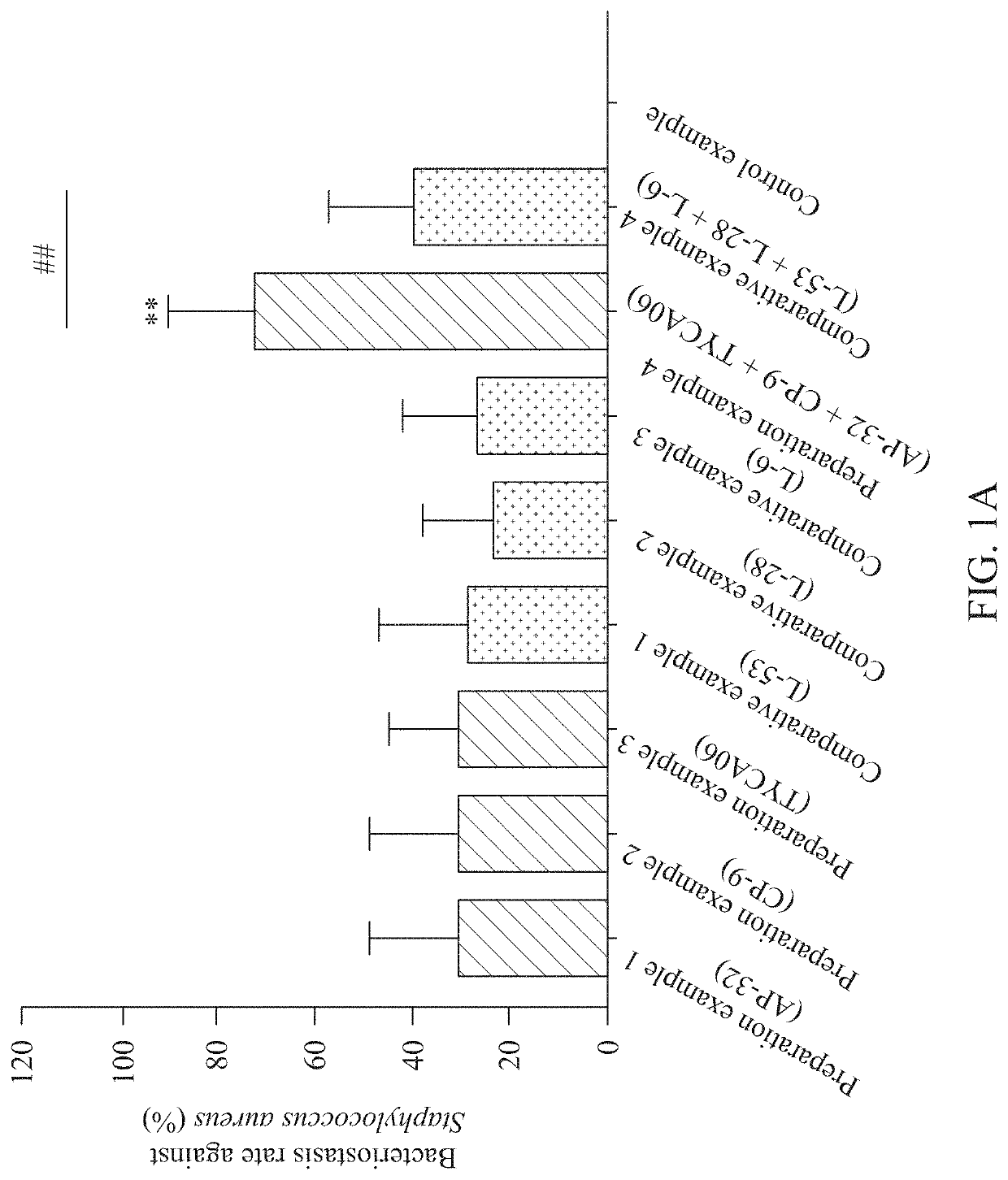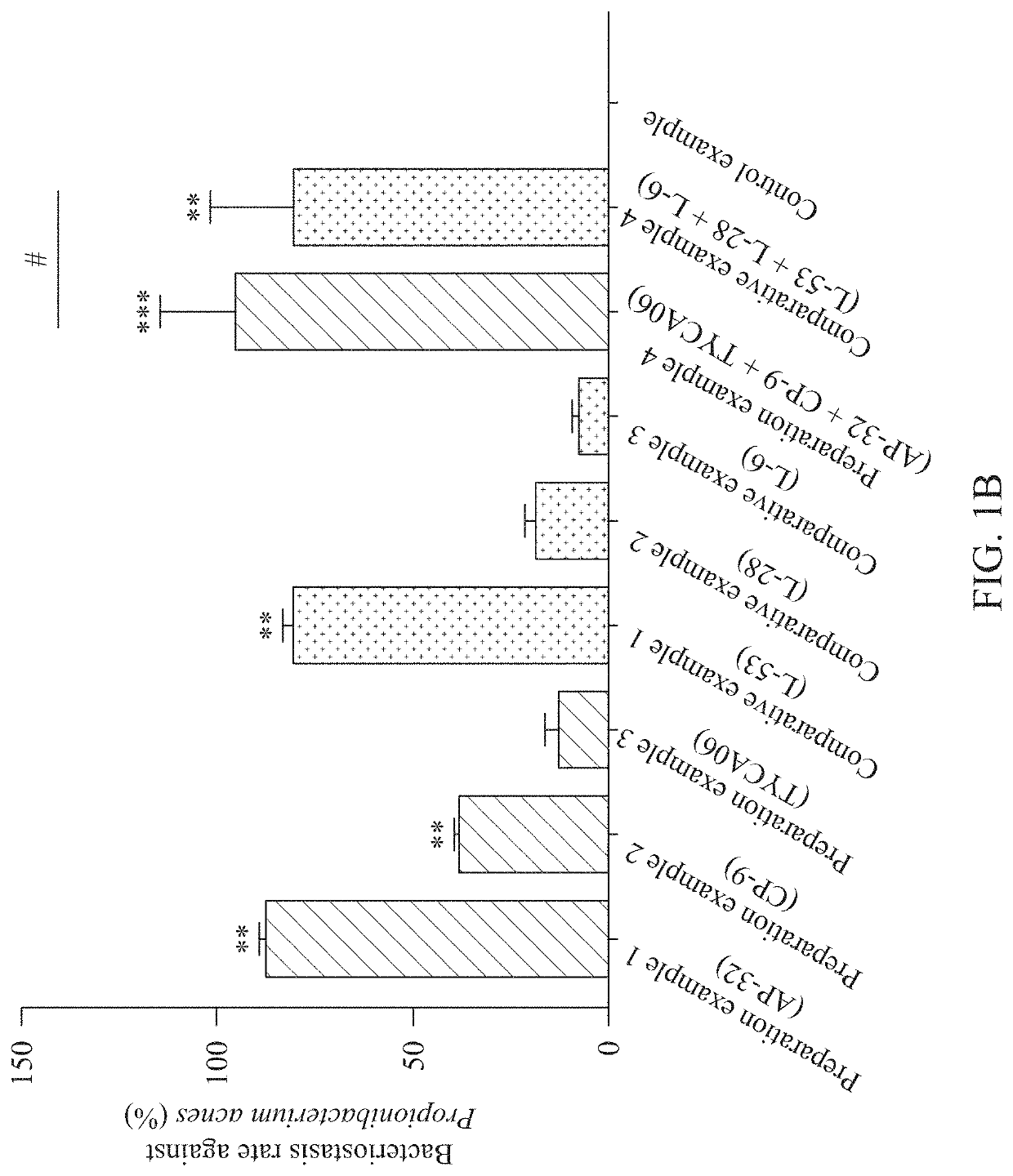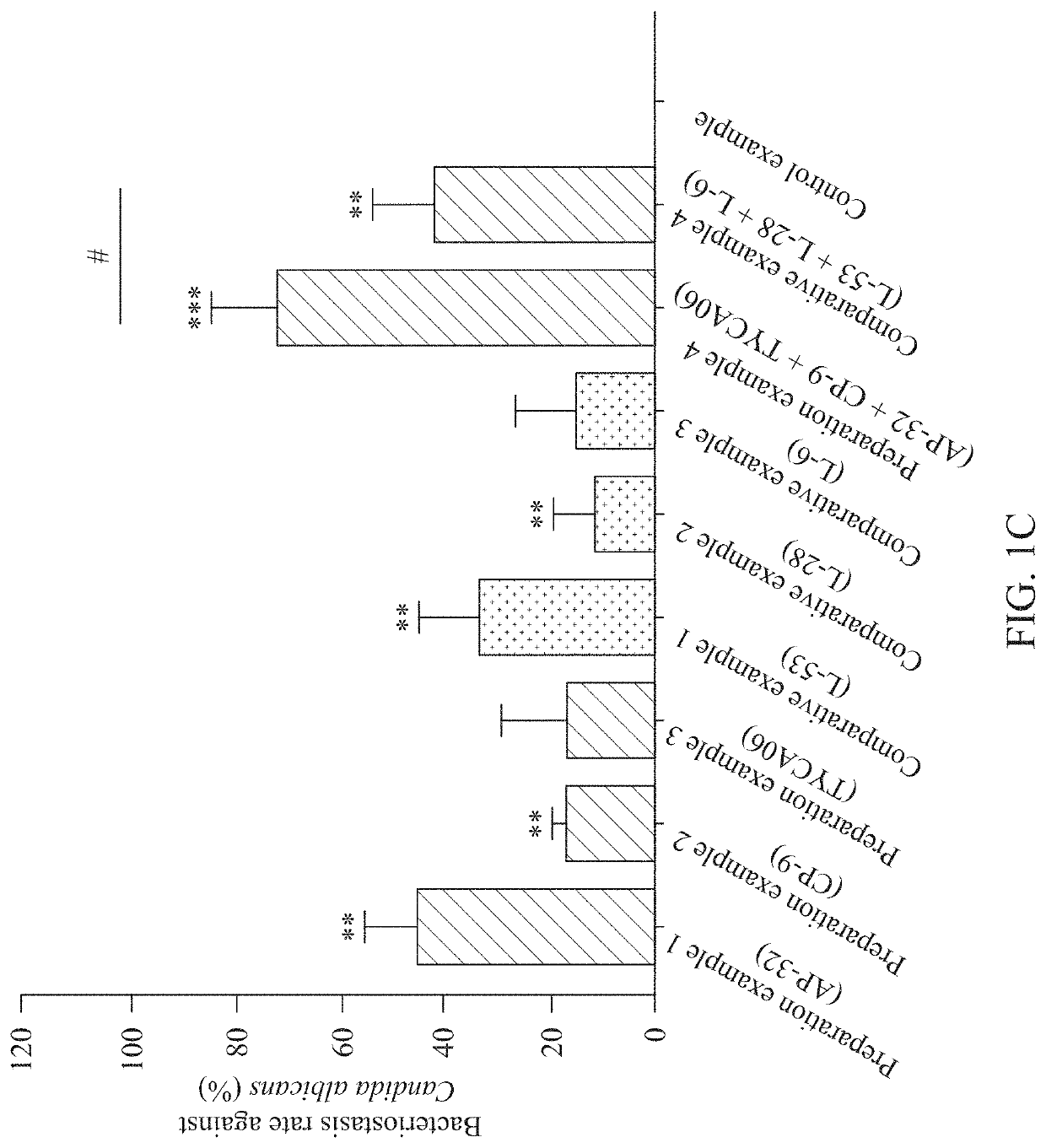Topical composition and method of improving skin diseases and dermatitis using the same
a technology of topical composition and skin disease, applied in the field of topical composition, can solve the problems of skin diseases that are easily caused, trigger a more serious inflammation, side effects such as skin atrophy, skin thinning, etc., and achieve the effects of improving skin diseases, effective inhibiting staphylococcus, and increasing the secretion of anti-inflammatory factors
- Summary
- Abstract
- Description
- Claims
- Application Information
AI Technical Summary
Benefits of technology
Problems solved by technology
Method used
Image
Examples
example 1
ogical Characteristics of Lactic Acid Bacteria
[0050]The species and bacteriological characteristics of lactic acid bacteria were analyzed by 16S rRNA sequential analysis and microbiological assay kit API, and the results were shown in Table 1.
TABLE 1Strain nameMorphological characteristicsLactobacillusIt was gram-positive bacillus which did not generate spores,salivariushad no catalase, oxidase or motility, and was able to grow insubsp.both aerobic and anaerobic environments. The optimalsalicinius AP-32growth temperature was 37 ± 1° C. It belonged to a facultative(accessionheterofermentative strain and did not produce gas in glucosenumber:metabolism. While cultured in a Man Rogosa and SharpBCRC910437(MRS) medium, the colony thereof had a white solid roundor CCTCC Mshape, while the cell thereof had a short rod-like shape, and2011127).the two ends of the cell were round-shaped. It often appearedin a single cell.BifidobacteriumIt was gram-positive bacillus, which did not generate spore...
example 2
on of Fermentation Broth and Fermentation Powder
[0051]Firstly, strains Nos. 1 to 6 of lactic acid bacteria, namely, Lactobacillus salivarius subsp. salicinius AP-32, Bifidobacterium animalis subsp. lactis CP-9, Lactobacillus acidophilus TYCA06, Lactobacillus salivarius subsp. salicinius L-53, Bifidobacterium animalis subsp. lactis L-28 and Lactobacillus acidophilus L-6 respectively were obtained, in which the strains L-53, L-28 and L-6 were provided by glac Biotech Co., Ltd, Taiwan. The aforementioned strains Nos. 1 to 6 were spread on an MRS medium agar individually to obtain single colonies.
[0052]The single colonies of strains Nos. 1 to 6 were inoculated in a fermenting substrate respectively, and a fermenting step was performed at 37° C. to obtain a lactic acid bacteria solution (LAB solution), in which the LAB solution contained about 109 CFU / mL to 1010 CFU / mL bacteria. The aforementioned fermenting substrate was an MRS culture solution including protein and / or plant extracts, i...
example 3
tasis Rate of Single-Strain or Multi-Strain Fermentation Powder Against Skin Pathogens
[0053]The fermentation powders of strains Nos. 1 to 6 were made into 4 wt % fermentation powder solutions with pure water respectively so as to obtain preparation example 1, preparation example 2, preparation example 3, comparative example 1, comparative example 2 and comparative example 3. Preparation example 1, preparation example 2 and preparation example 3 of equal amount were mixed so as to obtain preparation example 4, in which preparation example 4 contained 4 wt % of the fermentation powder. Comparative example 1, comparative example 2 and comparative example 3 of equal amount were mixed so as to obtain comparative example 4, in which the comparative example 4 contained 4 wt % of the fermentation powder. Pure water was used as a control example.
[0054]Solutions of pathogens Staphylococcus aureus, Propionibacterium acnes and Candida albicans, were prepared respectively (concentration: 1×105 C...
PUM
| Property | Measurement | Unit |
|---|---|---|
| temperature | aaaaa | aaaaa |
| concentration | aaaaa | aaaaa |
| wt % | aaaaa | aaaaa |
Abstract
Description
Claims
Application Information
 Login to View More
Login to View More - R&D
- Intellectual Property
- Life Sciences
- Materials
- Tech Scout
- Unparalleled Data Quality
- Higher Quality Content
- 60% Fewer Hallucinations
Browse by: Latest US Patents, China's latest patents, Technical Efficacy Thesaurus, Application Domain, Technology Topic, Popular Technical Reports.
© 2025 PatSnap. All rights reserved.Legal|Privacy policy|Modern Slavery Act Transparency Statement|Sitemap|About US| Contact US: help@patsnap.com



